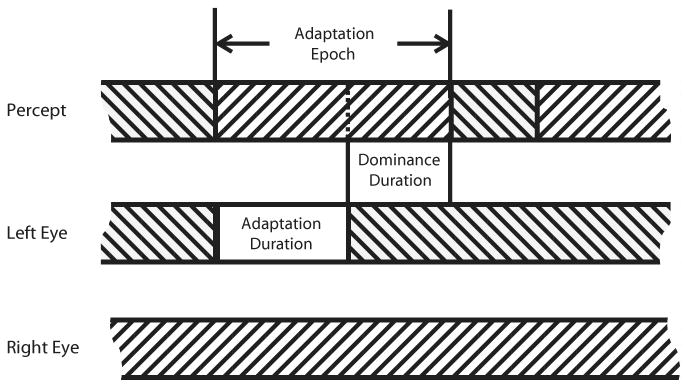Figure 1.
Schematic of stimuli and trial sequence for the online-adaptation experiment. The upper timeline (labeled “percept”) illustrates which of two gratings is perceptually dominant, and the lower two lines illustrate the physical stimuli presented to the two eyes. The sequence consists of a series of epochs. An adaptation epoch begins when the observer presses a given key, signifying that one eye's rival target had just achieved dominance (indicated by a left-hand vertical line in the percept timeline). At this moment, the other eye's rival stimulus is removed from that unadapted eye for a given duration (33%, 66%, or 100% of the average dominance duration) and then reintroduced. The dominance duration is defined as the time interval from the reintroduction of that previously removed stimulus until the dominant grating experienced during that adaptation duration is no longer dominant (indicated by a right-hand vertical line in the percept timeline).

